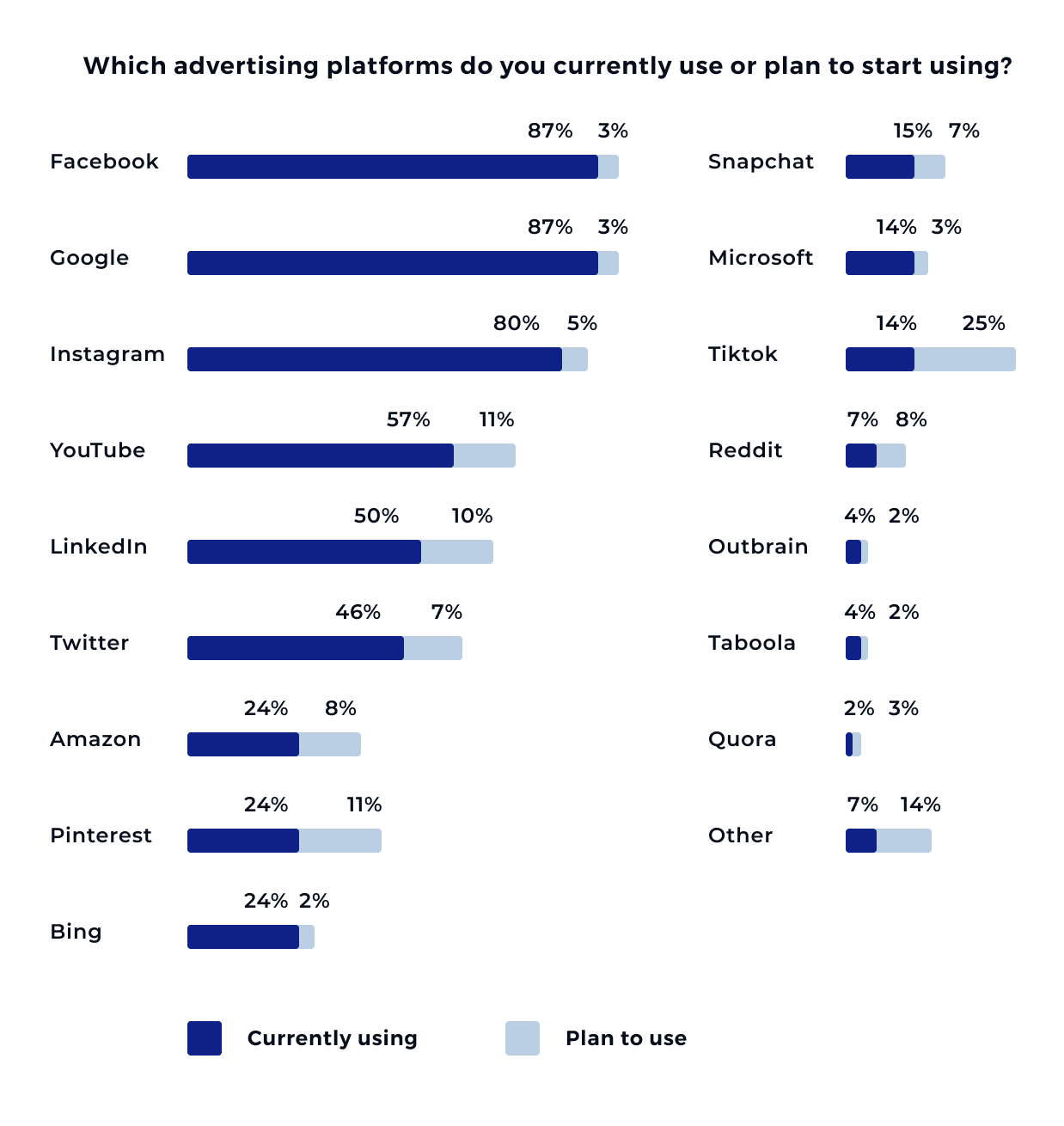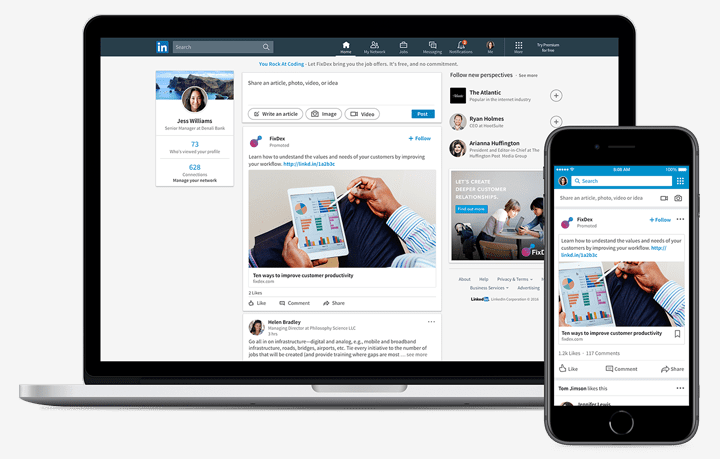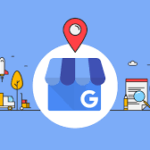Navigating the intricate landscape of today’s digital advertising platforms can be daunting, given their immense diversity and complexity. Selecting the most suitable platform is crucial for your business’s success, as it directly influences your campaign objectives. This guide offers an in-depth exploration of these platforms, outlines the key factors for making the right choice, and provides practical steps to guide your decision-making process. Our aim is to demystify digital advertising platforms and arm you with the knowledge needed to make informed choices for your business.
Understanding Digital Advertising Platforms
Digital advertising platforms are online mediums where businesses can place advertisements to reach their target audiences. These platforms vary widely, encompassing Social Media sites like Facebook and Instagram, Search Engines such as Google and Bing, and Content Marketing Platforms like Taboola, among others.
Each type of platform plays a unique role in digital marketing. Social media platforms, for instance, are excellent for building brand awareness and fostering customer relationships due to their interactive nature. Search engines, on the other hand, are adept at reaching customers with high purchase intent, as ads can be shown based on user queries. Content marketing platforms, meanwhile, allow businesses to provide valuable content directly to their target audience, fostering engagement and building trust.
Understanding how different platforms work is critical. Each platform has its own algorithm which determines how and when ads are shown. For instance, Facebook prioritizes ads with high engagement, while Google prioritizes relevancy and bid amount. Furthermore, each platform has its own target audience, which is often defined by user demographics, and offers various ad formats, like video, image, or text ads. By understanding these nuances, businesses can create more effective advertising campaigns.
The Most Popular Digital Advertising Platforms for Your Consideration
It might tough to make a choice, but the good news is that you have options. Here are some of the top and largest digital advertising networks to choose from:
- Google Ads (formerly Google AdWords): This is the most popular advertising platform which operates on a pay-per-click (PPC) advertising model. You can display ads on Google search results, non-search websites, videos, and mobile apps in the Google Network.
- Facebook Ads: Facebook’s huge user base makes it an effective platform for advertisers. They offer a wide range of options, such as banner ads, video ads, carousel ads, and boosted posts, which can be targeted at specific demographics.
- Instagram Ads: Owned by Facebook, Instagram ads allow businesses to share their stories with a highly engaged audience in a creative, high-quality environment. Advertisers can target audiences based on interests, demographics, and behaviors.
- LinkedIn Ads: This is a great platform for B2B advertisers. LinkedIn ads can be used to drive awareness, establish leads, and convert potential customers. Options include Sponsored Content, Message Ads, Dynamic Ads, and Text Ads.
- Twitter Ads: Twitter offers businesses the chance to promote tweets and target them towards a specific audience. Promoted tweets look like regular tweets but are labeled as “promoted”. They can help increase brand exposure and attract new followers.
- YouTube Ads: Owned by Google, YouTube offers several advertising options including display ads, overlay ads, skippable and non-skippable video ads, bumper ads, and sponsored cards. It’s a great platform for reaching a wide audience, especially if your advertising is video-based.
- Pinterest Ads: Pinterest offers Promoted Pins which look and behave like regular pins but have a sponsored label. They are a great way to reach women, with around 70% of Pinterest’s user base being female.
- Snapchat Ads: Snapchat is a mobile-first platform used primarily by younger audiences. They offer a range of ad formats including Snap Ads (full-screen video ads), Collection Ads, Story Ads, AR Lenses, and Filters.
- Amazon Advertising: This platform is extremely effective for ecommerce businesses. You can promote your products directly to consumers who are in the buying mindset. Amazon offers a variety of ad formats including sponsored products, sponsored brands, and product display ads.
- TikTok Ads: TikTok has exploded in popularity, especially among younger users. Businesses can create in-feed video ads, brand takeovers, branded AR content, TopView ads (which is the first thing users see when they open the app), and branded hashtag challenges.
Most used digital advertising platforms as of 2022

Most used digital advertising platforms as of 2022
How to Define Your Advertising Goals
Before choosing a digital advertising platform, it’s pivotal to have clear objectives. Defining your advertising goals upfront not only provides direction but also helps evaluate the effectiveness of your efforts down the line.
Common digital advertising goals include increasing brand awareness, driving website traffic, generating leads, and boosting sales. For instance, a new business might prioritize brand awareness to establish its presence, while an e-commerce site might focus on driving traffic and boosting sales.
To create meaningful goals, they must align with your overall marketing strategy. For example, if your marketing strategy involves establishing thought leadership in your industry, your advertising goal might revolve around promoting informative content to demonstrate your expertise.

LinkedIn ad content focused on generating leads
A well-defined goal serves as the north star for your campaign. It informs the choice of platform, budget allocation, and the metrics you’ll track. It provides a roadmap to navigate the complex digital advertising landscape and ensures your campaign stays focused and effective. Remember, a well-defined goal is the first step to a successful advertising campaign.
Matching Your Goals to Advertising Platforms
Choosing the right platform for your advertising goals can significantly enhance your campaign’s success. Different platforms cater to varied objectives due to their distinct capabilities.
For instance, Facebook, with its vast user base and robust targeting options, is excellent for building brand awareness. Google Ads, aligning with user’s search intent, can efficiently drive website traffic or facilitate lead generation. LinkedIn, with its professional demographics, is a powerhouse for B2B lead generation.
On the other hand, TikTok (though it’s slowly changing) is made up of more of a younger demographic.
And it’s also important to consider whether or not your product / service has a lot of demand. If people are actively searching for it, Google Ads is a great place to start.
Consider successful campaigns as case studies. A retail business, for instance, effectively used Instagram’s visually-rich platform to launch a new clothing line, greatly boosting brand awareness. A tech company leveraged LinkedIn’s targeted advertising to generate high-quality leads, significantly impacting their sales pipeline.
To maximize platform effectiveness, it’s essential to understand the unique features of each. For Facebook, engagement is key. Crafting share-worthy content can help improve ad performance. On Google Ads, aligning your ad copy and keywords with user search intent can increase click-through rates. For LinkedIn, offering valuable insights and content relevant to your industry can attract the right professionals. Remember, the right platform, when leveraged effectively, can help you achieve your goals more efficiently.
Key Factors to Consider When Choosing a Platform
Selecting the appropriate digital advertising platform can feel like navigating a labyrinth, but it can be simplified by considering a few key factors.
- Understanding your target audience’s demographics and behavior is crucial. If your customers spend their time on Instagram rather than LinkedIn, it’s smarter to allocate more of your resources there.
- Secondly, budget plays a pivotal role. Each platform has different cost structures, from pay-per-click to cost per impressions, so identify which offers the best ROI for your specific goals.
- Thirdly, analyzing your competition can provide insightful data. If competitors heavily saturate one platform, it might be worthwhile to explore less crowded spaces where your ads can stand out.
- Lastly, consider your resources and skills. Not every business can create engaging video content for YouTube or TikTok, but they may excel in creating compelling copy for Twitter or Facebook.
Making the right choice involves a delicate balance of these factors, aligning them with your business objectives to find your ideal digital advertising platform.
Practical Steps to Choosing the Right Platform
Identifying the ideal platform for your digital advertising efforts involves a strategic decision-making process. Start by testing different platforms to evaluate their effectiveness for your specific needs. This could involve running small, targeted campaigns to gauge initial results.
Monitoring and adjusting your strategy based on campaign performance is vital. Use analytics provided by the platform to track engagement, conversion rates, and other metrics. The data will inform you about what’s working and what isn’t.
Remember, it’s always a good idea to start small. There’s no need to launch a massive campaign right away. Instead, begin with a modest budget and gradually scale up once you’ve identified a platform that yields a high return on investment. Your digital advertising strategy should be a fluid process of testing, evaluating, adjusting, and scaling for optimal results.
Choosing the right digital advertising platform can significantly enhance your brand’s visibility and impact. It’s a decision that should be based on a clear understanding of your audience, budget, competition, and your team’s capabilities. Adopting a strategic approach—testing different platforms, closely monitoring campaign performance, and gradually scaling up your efforts—will help ensure your digital advertising efforts yield a robust return on investment. Remember, digital advertising is not a one-size-fits-all endeavor.
It’s about finding the right fit for your business to connect more effectively with your target audience and achieve your marketing goals. Stay flexible, keep learning, and adjust as needed to navigate the dynamic landscape of digital advertising.





